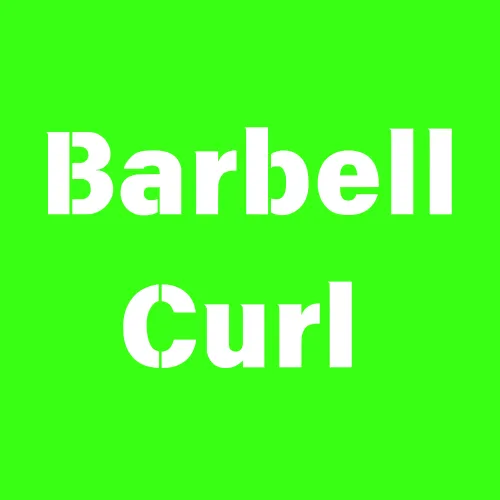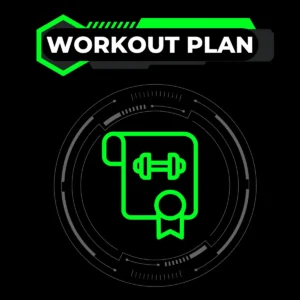The barbell curl is one of the most iconic and effective exercises for building strong, sculpted biceps. It’s a staple in countless workout routines and has stood the test of time as a go-to movement for athletes and gym enthusiasts alike. Whether you’re a beginner or an advanced lifter, mastering the barbell curl can help you achieve impressive arm strength and definition. In this article, we’ll delve into every detail you need to know about the barbell curl, from proper form to variations and common mistakes to avoid.
| Category | Details |
| Target Muscle Group | Biceps (Biceps Brachii) |
| Exercise Type | Strength Training |
| Equipment Needed | Barbell and Weight Plates |
| Force Type | Pull |
| Training Level | Beginner to Advanced |
| Supporting Muscles | Forearms (Brachioradialis), Shoulders (Anterior Deltoid) |
| Mechanics | Isolation |
Primary Muscle Groups Worked in Barbell Curl
The primary muscle targeted by the barbell curl is the biceps brachii, commonly referred to as the biceps. This two-headed muscle runs along the front of your upper arm and is responsible for elbow flexion and forearm supination (turning your palm upward). Building stronger biceps enhances your ability to perform pulling movements and improves arm aesthetics.
Secondary Muscle Groups Engaged in Barbell Curl
While the barbell curl primarily targets the biceps, several other muscles assist during the movement:
- Brachialis: Located beneath the biceps, this muscle aids in elbow flexion and contributes to arm thickness.
- Brachioradialis: A forearm muscle that helps stabilize and assist in lifting the weight.
- Deltoids (Anterior): Provide stability to the shoulder joint during the curl.
- Trapezius and Rhomboids: Support posture and stabilize the upper body while curling.
Instructions For Barbell Curl
Performing the barbell curl with proper form is essential for maximizing results and preventing injury. Follow these step-by-step instructions:
- Setup:
- Stand upright with your feet shoulder-width apart.
- Grip the barbell with an underhand (supinated) grip, hands slightly wider than shoulder-width.
- Starting Position:
- Hold the barbell at arm’s length, resting against your thighs.
- Keep your elbows close to your torso and maintain a neutral spine.
- Execution:
- Slowly curl the barbell upward by bending your elbows.
- Keep your upper arms stationary and avoid swinging the weight.
- Squeeze your biceps at the top of the movement.
- Lowering the Barbell:
- Gradually lower the barbell back to the starting position.
- Maintain control throughout the descent to engage your muscles fully.
- Repetition:
- Perform 3–4 sets of 8–12 reps, depending on your fitness level and goals.
Benefits Of Barbell Curl
The barbell curl offers numerous benefits, making it a must-have in any strength-training routine:
- Bigger Biceps: Builds size and definition in the upper arms.
- Improved Strength: Enhances pulling power for exercises like pull-ups and rows.
- Functional Fitness: Strengthens muscles used in everyday tasks, such as lifting and carrying.
- Aesthetic Appeal: Creates well-defined arms that complement an overall balanced physique.
- Versatility: Can be modified with variations to target different muscle groups and prevent plateaus.
Variations Of Barbell Curl
Switching up your routine with barbell curl variations can help target different areas of the biceps and keep your workouts engaging. Here are four popular variations:
1. Standard Barbell Curl
This is the classic version described above. It’s perfect for overall biceps development and should be a staple in your training.
2. Reverse Barbell Curl
- Grip the barbell with an overhand (pronated) grip.
- This variation emphasizes the brachialis and brachioradialis, adding thickness to your arms and improving forearm strength.
3. Close-Grip Barbell Curl
- Place your hands closer together on the bar, about 6 inches apart.
- This variation increases activation of the long head of the biceps, enhancing the peak of your biceps.
4. EZ Curl Bar
- Use an EZ curl bar instead of a straight barbell.
- The angled grips reduce strain on your wrists and allow for a more comfortable curl, while still effectively targeting the biceps.
Common Mistakes Of Barbell Curl
Avoid these common mistakes to ensure proper form and prevent injuries:
- Using Momentum: Swinging the barbell reduces muscle engagement and increases the risk of injury.
- Elbow Movement: Keep your elbows fixed to isolate the biceps.
- Excessive Weight: Lifting too heavy compromises form and reduces effectiveness.
- Neglecting the Eccentric Phase: Lowering the weight too quickly minimizes muscle activation.
- Leaning Back: Overarching your back places unnecessary strain on the spine.
- Not fully extending the elbows during the eccentric phase:When lowering the bar, many people stop short of full extension. This limits the stretch and activation of the biceps. To maximize gains, lower the bar with control until your arms are almost fully straight—but don’t lock your elbows completely to protect your joints.
If you’re guilty of any of these, don’t worry—just reset, refocus, and practice. Consistency is key.
Safety and Precautions In Barbell Curl
Follow these safety tips to minimize the risk of injury:
- Warm up your arms and shoulders before starting.
- Use a weight that allows you to maintain proper form.
- Avoid locking your knees; keep a slight bend for stability.
- Engage your core to protect your lower back.
- Stop immediately if you experience pain or discomfort.
Equipment Needed In Barbell Curl
To perform a barbell curl, you’ll need the following equipment:
- Barbell: Choose a standard or Olympic barbell based on your strength level.
- Weight Plates: Select appropriate weights for your fitness level.
- Collars: Secure the weight plates to prevent shifting during the exercise.
- Mirror: Use a mirror to monitor your form and ensure proper technique.
Alternative Exercises For Barbell Curl
If you don’t have access to a barbell or want to try something different, consider these alternatives:
- Dumbbell Bicep Curls: Use dumbbells to allow for greater range of motion and unilateral training.
- Cable Curls: Provide constant tension on the biceps throughout the movement.
- EZ-Bar Curls: Reduce wrist strain while targeting the biceps effectively.
- Preacher Curls: Isolate the biceps by performing curls on a preacher bench.
- Resistance Band Curls: A portable option for at-home or travel workouts.
Other Names Of Barbell Curl
The barbell curl is sometimes referred to by different names, including:
- Barbell Bicep Curl
- Straight Bar Curl
- Standing Barbell Curl
- Biceps Barbell Lift
Conclusion
The barbell curl is a timeless exercise that delivers impressive results when performed correctly. By targeting the biceps and engaging supporting muscles, it helps you build strength, enhance your physique, and improve functional fitness. With proper form, progressive overload, and variations, you can make the most of this classic movement. Incorporate it into your workout routine and watch your arm gains soar!
If you’re looking for more exercises to build your arms, be sure to check out our arm library. You’ll find comprehensive guides, workout plans, and expert tips to help you take your bicep and tricep training to the next level!
For a complete collection of exercises targeting all muscle groups, visit our Exercise Library. Explore detailed guides and focused workouts to improve your overall performance and fitness journey!
Enhance Your Arm Training: Must-Read Resources
The barbell curl is a staple isolation exercise for building strong and defined biceps, specifically targeting the biceps brachii. To gain a deeper understanding of arm muscle anatomy and movement mechanics, check out this comprehensive guide on ExRx.net.
For those looking to refine their barbell curl technique and explore variations, expert advice and training tips are available on Bodybuilding.com. Whether you’re a beginner or an advanced athlete, this resource is tailored to enhance your bicep training results.
Proper form and safety are essential to maximize results and prevent injury during this exercise. Learn more about exercise safety and guidelines from the trusted Mayo Clinic.



